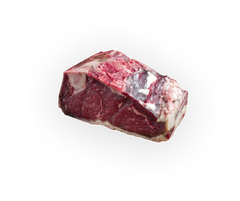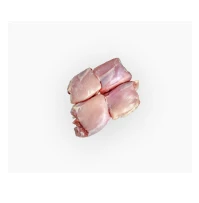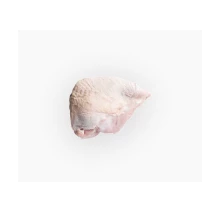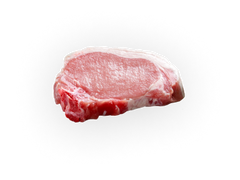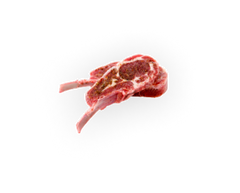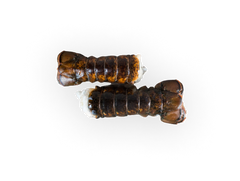Salmon has long been a cornerstone of Canadian cuisine and culture, especially in coastal regions where the ocean's bounty plays a significant role in daily life. Among the many varieties of salmon available, wild-caught sockeye salmon stands out as a nutritional powerhouse and a delicious, sustainable choice. Its striking red colour and rich flavour make it a favourite among seafood enthusiasts. In this blog post, we’ll explore the many advantages of wild-caught sockeye salmon and unravel the mysteries behind its vibrant hue.
Why Choose Wild-Caught Sockeye Salmon?
Nutritional Benefits
Wild-caught sockeye salmon is renowned for its exceptional nutritional profile. It is a high-quality source of protein, containing all nine essential amino acids necessary for muscle growth, repair, and overall health. In addition, it is packed with omega-3 fatty acids, particularly EPA (eicosapentaenoic acid) and DHA (docosahexaenoic acid). These healthy fats are essential for brain function, cardiovascular health, and reducing inflammation.
Compared to farmed salmon, wild sockeye salmon tends to have a leaner profile, which means it contains fewer calories while still being rich in nutrients. Wild salmon also boasts higher levels of essential vitamins and minerals, including vitamin D, vitamin B12, selenium, and potassium, which contribute to improved energy levels, a stronger immune system, and better bone health.
Superior Taste and Texture
One of the primary reasons food lovers gravitate toward wild-caught sockeye salmon is its superior taste and texture. The firm, flaky flesh of wild sockeye salmon offers a satisfying bite, and its robust flavour has a natural richness that doesn’t require heavy seasoning or marinades to shine. This distinct taste makes it a versatile ingredient that works beautifully in a variety of dishes, from grilled fillets to sushi and smoked preparations.
Environmental and Ethical Considerations
Choosing wild-caught sockeye salmon over farmed alternatives also supports sustainable fishing practices. In Canada, fisheries that harvest wild sockeye salmon are typically managed under strict regulations to prevent overfishing, protect marine habitats, and ensure the long-term health of fish populations. By opting for wild-caught salmon, consumers can feel confident they are making an environmentally responsible choice.
Farmed salmon, on the other hand, has raised concerns about environmental impacts, such as water pollution, the spread of disease to wild fish populations, and the use of antibiotics. Supporting wild fisheries helps mitigate these issues and promotes a healthier ecosystem.
Free from Additives and Artificial Colours
Unlike farmed salmon, which is often supplemented with synthetic additives to mimic the natural colour of wild salmon, wild-caught sockeye salmon’s vivid red hue is entirely natural. This brings us to a fascinating topic—the science behind the colour of salmon.
The Colour of Wild Salmon: Understanding the Hues
One of the most striking features of salmon is the variety of hues found in their flesh, ranging from pale pink to deep red. What accounts for these differences, and does it impact the quality of the fish?
The Role of Astaxanthin
The colour of salmon flesh is primarily determined by a naturally occurring compound called astaxanthin. This carotenoid pigment is found in the diet of wild salmon, which includes zooplankton, krill, and other small marine organisms. Astaxanthin not only gives salmon its distinctive colour but also provides significant health benefits, acting as a powerful antioxidant to reduce oxidative stress and support skin and eye health.
Variations in Colour
The intensity of salmon flesh colour depends on the amount of astaxanthin consumed. Salmon that have a diet rich in astaxanthin-producing organisms develop a deeper red hue, while those that consume less exhibit orange or pink flesh. For example:
- Deep Red Flesh: Salmon with the highest intake of astaxanthin, such as sockeye salmon, have vividly red flesh.
- Orange Flesh: Salmon with moderate astaxanthin consumption, like coho salmon, display an orange hue.
- Pink Flesh: Salmon with lower astaxanthin levels, such as pink salmon, exhibit a lighter pink colour.
It’s important to note that these variations in colour do not impact the fish’s taste or texture. All wild salmon, regardless of hue, offer the same rich flavour and firm texture that make them a beloved choice among seafood lovers.
Farmed vs. Wild Salmon Colour
Farmed salmon are typically fed a controlled diet that lacks the natural abundance of astaxanthin found in the wild. To achieve a marketable appearance, synthetic astaxanthin or other pigments are often added to their feed. While these additives are considered safe, they do not provide the same natural benefits as wild-caught salmon.
Cooking with Wild Salmon of All Hues
Regardless of whether your wild salmon is pink, orange, or red, its quality and versatility in the kitchen remain exceptional. Here are some tips for preparing salmon:
Simple Preparation Tips
- Grilled: Brush the salmon with olive oil, season with salt, pepper, and a squeeze of lemon, and grill it skin-side down for a few minutes on each side.
- Pan-Seared: Heat a non-stick skillet over medium-high heat, add a bit of butter or oil, and cook the fillet skin-side down until crispy. Flip and cook for an additional minute or two.
- Baked: Place the salmon on a baking sheet, season with your favourite herbs and spices, and bake at 375°F (190°C) for 12-15 minutes, depending on thickness.
Pairing Suggestions
Wild salmon pairs beautifully with roasted vegetables, wild rice, or fresh salads. For a uniquely Canadian twist, try serving it with maple-glazed carrots or a dill and mustard sauce.
Supporting Canadian Fisheries
As Canadians, we are fortunate to have access to some of the best seafood in the world. By choosing wild-caught salmon from Canadian fisheries, we not only enjoy a superior product but also support local communities and sustainable fishing practices. When shopping, look for labels that indicate the salmon is wild-caught and sourced from responsible fisheries—such as those certified by organizations like Ocean Wise or the Marine Stewardship Council (MSC).
Final Thoughts
The variations in salmon flesh colour—whether pink, orange, or red—are a natural result of their diet and do not impact the quality of taste or texture. Wild-caught salmon is more than just a delicious meal—it’s a nutritional powerhouse, a symbol of sustainability, and a testament to nature’s ability to provide us with exceptional food.
So, the next time you’re at the seafood counter, embrace the spectrum of hues and choose wild-caught salmon. Not only will you be treating yourself to a healthier and more flavourful meal, but you’ll also be supporting sustainability and Canadian fisheries. It’s a choice that’s good for your palate and the planet.
